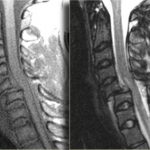Hypothermia And Wound Infection In Trauma
For the most part, hypothermia is a bad thing for trauma patients. Its impact on bleeding and mortality has long been known. A paper just out now implicates it in surgical site infections as well. This fact has already been shown for some types of elective surgery (colorectal), but it appears to be a factor in trauma laparotomy as well.
A retrospective review of 524 patients who underwent a trauma lap looked at the correlation of surgical site infection (SSI) and the depth and duration of hypothermia. The mean low temp across all cases was 35.2° C (!). Nearly a third had at least one measurement below 35° C. About 36% of all patients developed an SSI.
- Hypothermia is a common problem in these patients!
- 35 C was the nadir temp most predictive of developing an infection
- Every degree below 35 C more than tripled the risk of SSI
Bottom line: Yet one more reason to avoid hypothermia in our trauma patients! This effort begins with prehospital providers doing their best to insulate and keep patients warm. The trauma team also has a responsibility to heat up the room and keep the patient covered as much as possible. Baseline temp should be obtained in all major trauma patients. And if they do end up in the operating room, anesthesia needs to monitor the temp closely and keep the surgeon apprised of any concerning drops.
Related posts:
- Rapid rewarming using warm water immersion
- Warm water immersion policy
- History: CAVR for hypothermia
Reference: The Effects of Intraoperative Hypothermia on Surgical Site Infection: An Analysis of 524 Trauma Laparotomies. Annals of Surgery 255(4):789-795, 2012.







